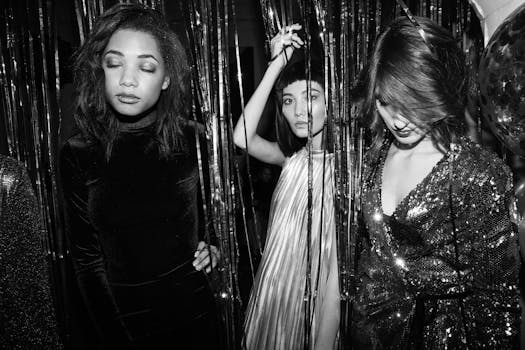AI-Powered Trend Forecasting: How Algorithms Predict Style
As we enter a new era of technology and innovation, it’s no surprise that artificial intelligence (AI) has made its way into the fashion industry. Gone are the days where trend forecasting was solely left to human intuition and market research. With the help of advanced algorithms and data analysis, AI-powered trend forecasting has become the new norm, allowing fashion brands and retailers to predict style trends with unparalleled accuracy. In this article, we’ll delve into the world of AI-powered trend forecasting and how it’s revolutionizing the fashion industry.
The Rise of AI in Fashion Forecasting
Trend forecasting has always been a crucial aspect of the fashion industry, as understanding consumer preferences and predicting future trends can make or break a brand’s success. Traditionally, trend forecasting has been an extremely time-consuming and subjective process. Fashion experts would attend fashion shows, scour the streets, and analyze market trends to come up with predictions for the upcoming seasons. While this approach was effective, it was not without its flaws. Human biases and limited data could often lead to inaccurate forecasts.
However, with the emergence of AI-powered trend forecasting, the process has become more efficient and accurate. By analyzing vast amounts of data from social media, sales data, and demographic information, AI algorithms can identify patterns and predict emerging trends in real-time. As a result, brands can make data-driven decisions and stay ahead of the curve in an ever-changing industry.
The Science Behind AI-Powered Trend Forecasting
So, how exactly do AI algorithms predict style trends? The answer lies in their ability to process large amounts of data and identify patterns that the human eye may overlook. Here’s a breakdown of the steps involved in AI-powered trend forecasting:
1. Data Collection and Analysis
The first step in AI-powered trend forecasting is data collection. The more data an AI algorithm has access to, the more accurate its predictions will be. This data is collected from various sources, such as social media platforms, online shopping behavior, and search trends. Once collected, the data is analyzed using machine learning algorithms to identify patterns and trends.
2. Identifying Key Indicators
AI algorithms look for key indicators that can influence fashion trends, such as popular hashtags, celebrity endorsements, and sales data. By using these indicators, algorithms can understand what styles and trends are resonating with consumers and predict which ones will continue to gain popularity.
3. Predicting Emerging Trends
Using the data and key indicators, AI algorithms can forecast which styles and trends will be popular in the future. By staying on top of emerging trends, brands can plan their collections and marketing strategies accordingly, ultimately increasing their chances of success.
The Benefits of AI-Powered Trend Forecasting
There are numerous advantages to using AI-powered trend forecasting in the fashion industry.
1. Increased Accuracy
As mentioned earlier, AI algorithms can analyze vast amounts of data and identify patterns that humans may miss. This leads to more accurate predictions, ultimately reducing the risk of investing in styles that may not be popular with consumers.
2. Time and Cost-Efficient
AI-powered trend forecasting is a time and cost-efficient process. By automating the data collection and analysis process, fashion brands and retailers can save time and resources that would otherwise be spent on manual labor and market research.
3. Better Customer Engagement
With AI-powered trend forecasting, brands can tailor their collections to meet their customers’ preferences and stay ahead of their competitors. By producing styles that are in high demand, brands can boost customer engagement and loyalty.
The Future of AI in Fashion Forecasting
As technology continues to advance, we can expect AI-powered trend forecasting to only become more advanced and prevalent in the fashion industry. With the rise of virtual showrooms and personalized shopping experiences, AI algorithms will play a crucial role in predicting what consumers want and delivering it to them.
In conclusion, AI-powered trend forecasting has transformed the way fashion brands approach trend forecasting, making it more accurate, efficient, and customer-centric. As we move towards a more data-driven world, we can expect AI algorithms to continue to shape the fashion industry and drive its growth and success.








